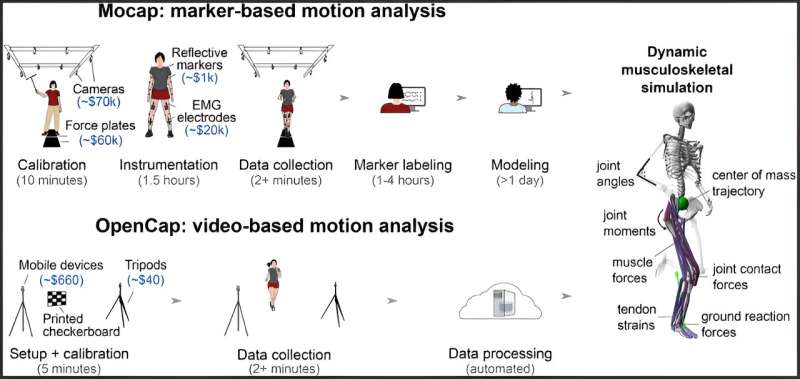Credit: PLOS Computational Biology (2023). DOI: 10.1371/journal.pcbi.1011462
A research team has developed a smart phone app that can track and analyze a person's ability to move from one place to another, known as locomotion, and other types of movements. Human motion analysis is used to evaluate patients with movement difficulties, to help clinicians plan surgery, and to assess the results of treatment procedures. The research team believes that using the app costs about 1% of conventional motion analysis techniques and works 25 times faster. The study appears in PLOS Computational Biology.
Researchers tested their app, called OpenCap, with 100 participants. Using two or more smart phones, the app recorded sufficient quality videos to allow for web-based, artificial intelligence analysis of muscle activations, joint loads and joint movements. Data collection took 100 hours for the 100 participants, and computation of results took 31 hours. Traditionally, locomotion analysis requires fixed lab space and more than $150,000 worth of equipment, including eight or more specialized cameras to capture three-dimensional images. The captured data also takes several days to analyze by a trained expert.
While current technology is too expensive for routine clinical use, according to the investigators, the app could potentially be used to help screen for disease risk, inform rehabilitation decisions, and track improvements in motion following treatment.
The study was conducted by Scott L. Delp, Ph.D., of Stanford University, and colleagues.
More information: Scott D. Uhlrich et al, OpenCap: Human movement dynamics from smartphone videos, PLOS Computational Biology (2023). DOI: 10.1371/journal.pcbi.1011462
Journal information: PLoS Computational Biology
























